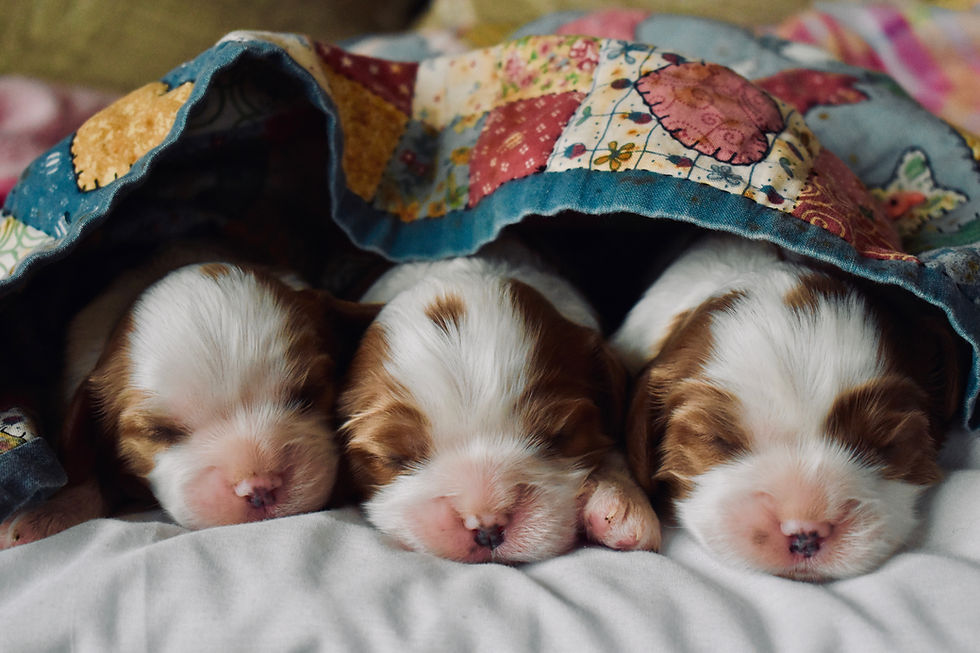Body Language Bites - Examples
- Nickala Squire
- Nov 8, 2021
- 2 min read
Updated: Jul 9, 2022

First photo up! Remember, observations first, then cautious interpretation.
Black & tan dog-
Face: ears up and forward, alert but soft eyes and eyebrows, off kilter nose (sniffing), panting with a loose mouth, tongue relaxed so we see the ridges of his teeth underneath
Head: raised and turned to the camera
Tail: loosely raised
Body: centered, not leaning
Red & white dog-
Face: ears up but slightly pulled together (causing wrinkling) and turned to the sides, eyes looking in a different direction than her head
Head: lowered
Tail: loosely raised
Body: it's tough to tell here if she's leaning a bit forward and away from the black & tan dog or not, but there's no significant lean if so
Please review the above body parts and compare with the photo to spot these cues yourself before reading further. In order to improve body language fluency, we have to make an effort to reserve judgements until we've processed the objective visual information we're given. Otherwise, we risk only recognizing the aspects of body language that support our initial gut feelings.
Background-
This photo was taken at a dog park. These dogs knew each other fairly well from previous visits. The black & tan dog is my own.
Interpretation-
The black and tan dog, my dog, was likely panting from heat or mild exertion, walking towards his friend. He gets excited and hopeful when I focus my attention on him, hoping for treats or play. The red and white dog is showing some mild body language that we tend to associate with apprehension or uncertainty in her sideways ears, lowered head and indirect gaze, though it's tough to say exactly why. Was she about to interact with my dog but didn't know how he'd take it? Was she hoping for treats too, but worried her owner would get upset at her begging? Was she just showing her non-confrontational intent, unsure why my dog suddenly altered his focus? She shows more confident and relaxed body language in her loose raised tail and willingness to approach and since I was there I can relay that overall she was relaxed, happy to be there and happy to interact with others. If you think about how many times in a day you have some fleeting uncertainty, confusion or mild apprehension, it becomes easy to understand that minor moments like these are not cause for alarm. If signs of worry or apprehension happen with frequency, get more intense or we acquire new information about interactions that didn't go well for the red and white dog, we may need to alter our judgement. Until then, there's nothing to worry about.




Comments